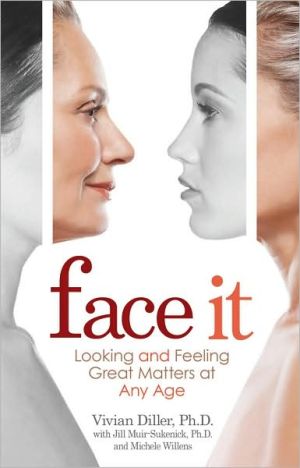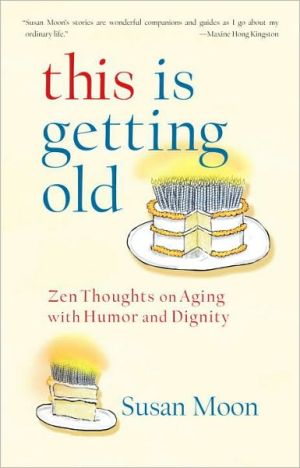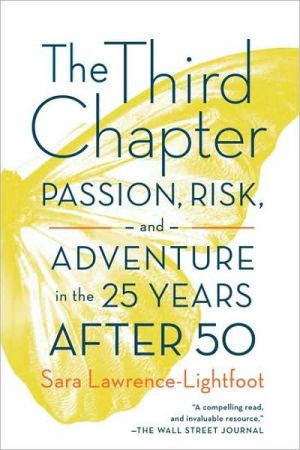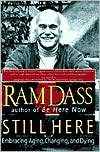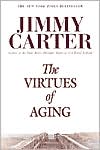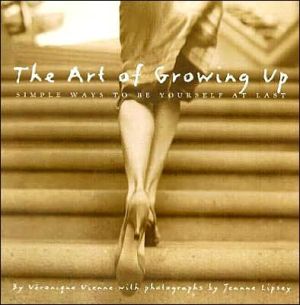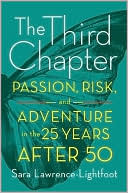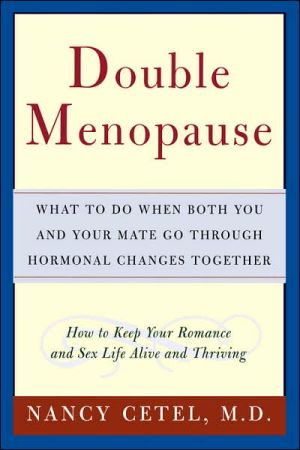Face It: What Women Really Feel as Their Looks Change
Let’s face it: everyone’s getting older. But millions of women, raised to believe that success and happiness are based on their intelligence and accomplishments, face an unexpected challenge: the physical realities of aging. If looks are not supposed to matter, why do so many women panic as their appearance changes?\ Their dilemma stems from two opposing societal views of beauty which lead to two different approaches to...
Search in google:
Let’s face it: everyone’s getting older. But millions of women, raised to believe that success and happiness are based on their intelligence and accomplishments, face an unexpected challenge: the physical realities of aging. If looks are not supposed to matter, why do so many women panic as their appearance changes?Their dilemma stems from two opposing societal views of beauty which lead to two different approaches to aging. Should women simply grow old naturally since their looks don’t define them, or should they fight the signs of aging since beauty and youth are their currency and power? This Beauty Paradox leaves many women feeling stuck.Face It, by Vivian Diller, Ph.D., is a psychological guide to help women deal with the emotions brought on by their changing appearances. As a model turned psychotherapist, Diller has had the opportunity to examine the world of beauty from two very different vantage points. This unique perspective helped her develop a six-step program that begins with recognizing “uh-oh” moments that reveal the reality of changing looks, and goes on to identify the masks used to cover deeper issues and define the role beauty plays in a woman’s life, and ends with bidding adieu to old definitions of beauty, so women can enjoy their appearance—at any age!
face it: What Women Really Feel as Their Looks Change\ A Psychological Guide to Enjoying Your Appearance at Any Age \ \ By VIVIAN DILLER Jill Muir-Sukenick \ HAY HOUSE, INC.\ Copyright © 2010 Vivian Diller, Jill Muir-Sukenick, and Michele Willens\ All right reserved.\ ISBN: 978-1-4019-2540-6 \ \ \ Chapter One\ A Generation Lost and Confused \ The democratic idea has not extended to aesthetic variation; instead the aesthetic idea has paradoxically become narrower over the last few decades. - Susie Orbach\ Is This What We Fought For?\ Beauty is antithetical to our democratic ideals. It is distributed unfairly and unequally and this does not sit well with other values held by most evolved women. Consequently, many of us deal with the subject of beauty by dismissing it as insufficiently weighty, anti-feminist, unintellectual, and culturally induced. Others hold contempt for those who are blessed with great genes. Some just cope by using cognitive dissonance, a mental trick that allows us to feel more comfortable with a reality we cannot control: concluding, for example, that most beautiful women are stupid. Sure, we've occasionally heard of the brainy blonde but not nearly as often as her dumb counterpart.\ In spite of these cognitive acrobatics and rationalizations, so many of us continue to struggle reconciling who we are with how we look. Why does our appearance matter to us even if our politics, beliefs, and intellect tell us it shouldn't? To understand this dilemma, we have to recognize the biological and cultural roles beauty plays in our lives.\ * * *\ What has always been true is that beauty, in its purest sense, is a universal staple of human experience. It plays a powerful and fundamental role in our personal and professional lives. It is a basic human pleasure that will never go away.\ * * *\ Scientific studies have been conducted to demonstrate that humans are hardwired to react to beauty. Recent research supports the belief that attractive physical features serve evolution, propelling the survival of our species. Psychosociologists examining the psychology of beauty infer that people who are commonly considered attractive seem to survive better than those who aren't. This has led them to theorize that good-looking people may have stronger immune systems, more robust genes, and higher mate-value. Other studies tell us that what is considered attractive is similar across varied and unrelated cultures; for example, men generally are more attracted to women with large eyes and small noses set in round faces-features often associated with infants. And MRI and PET scans provide further evidence about the importance of beauty: Female brain activity has been shown to increase when women are told they are being admired by men. Male brains register more activity when viewing women they consider attractive.\ Developmental research reveals that newborns not only quickly recognize facial features but also demonstrate preference for faces independently rated as attractive. This natural bias for beauty evolves into deep-seated stereotypes that result in a psychological phenomenon called "the Halo Effect," which says that the quality of one trait is automatically applied to all parts of the object being observed. For example, someone who is regarded as beautiful is also assumed to be responsible, intelligent, adaptable, and so on. This translates into a tendency for attractive people to be hired faster, get better jobs, earn more money, and even get acquitted more often. In essence, those who are physically blessed are not simply accorded more leeway in life, they are universally and positively recognized and rewarded.\ It's not surprising then that the desire to be attractive and perceived as such remains important to women of all ages across the world and spans all ages. Sociologist Naomi Wolf writes, "Beauty is a currency system like the gold standard." Most women agree, reporting that good looks continue to be associated with respect, legitimacy, and power in their relationships with others. Actress and model Isabella Rossellini says, "In monetary terms, beauty pays more than anything."\ What do these facts and inequities about physical beauty mean to a generation of women whose childlike faces are fast becoming distant memories? It could lead you to conclude that we are right back where we started, with science confirming the sentiment supported by so many popular books-that it is what's outside that counts and that we should, in fact, seek ways for how not to look old. Or, accept our biology and resign ourselves to an inevitable fate, as Lucille Ball jokingly suggested, "The secret of staying younger is to live honestly, eat slowly, and lie about your age." Easy to say, but it's not so simple.\ To truly understand beauty is to view it as a combination of objectivity and perception, as a science and an art. Some studies demonstrate that how we appear to others is about more than what meets the eye. For example, one study examining the perception of beauty found that college students rated a professor as physically attractive when he behaved kind and friendly; whereas, when the same instructor behaved cold and distant, they did not. In another study that examined attributes used to select a mate, physical features were viewed as having less value than qualities like seriousness, sincerity, and independence. For both men and women, finding a partner with whom they could develop a committed relationship was considered more important than finding one with good looks. An international survey of women suggests that, in most countries, only a small percentage are comfortable calling themselves beautiful, but many call themselves attractive if they are engaged in enjoyable activities and have close relationships.\ In our own research, when we asked women the question, "At what time in your life did you view yourself as most attractive?" the answers were remarkably unrelated to age. A majority said it was in their 20s or 30s, but many responded that they felt most attractive later in life, when they felt more confident or when they were happiest.\ * * *\ Findings from our studies and others on beauty confirm what most of us know: that experience of attractiveness is about what is outside and inside, and what counts most is connecting the two. And it is this very connection that millions of us are finding so hard to make.\ * * *\ It might help to take comfort in the fact that our physical ideal of beauty holds greater contradictions today than ever before. Women sporting holes in jeans, rings through noses, and multicolored braids are seen on the covers of current fashion magazines. In contrast to traditional images which have been attributed to facial and body symmetry, there are now great varieties to what constitutes good looks: the ultra thin, ultra tall, the curvy, the bony, the straight haired, the curly, the spiky, and on it goes.\ And public fascination with physical appearances currently flips as quickly as our remote controls-from Miss America to The Biggest Loser. When America's Next Top Model tried to broaden the criteria for their contestants by inviting women under 5'7" to audition, they hoped to interest a greater variety of competitors seeking a spot on their show. The result? Bedlam broke out as hundreds of everyday, good-looking women flooded the audition, fighting for the chance to be acknowledged as the most beautiful.\ You would think that all this opportunity and variety might represent a form of emancipation!\ Yet among all these new variations there remains one constant that does not fluctuate in our culture or in our minds. Youth. Young, clear, unblemished skin and strong, smooth bodies remain the ideal image to which women feel driven. It is a visual ideal no longer confined to the province of young brides, celebrities, or fashion models. Women of all ages and walks of life are drawn toward this narrow definition of beauty at any cost and by whatever means.\ * * *\ Instead of equality, we have this daunting equation: if beauty equals youth, and aging equals the loss of youth, then this is a new math that can't be mastered. Small wonder we are confused about the messages we are receiving and the emotions we did not think we would be confronting.\ * * *\ Sure, millions turning 40 exhaled when feminist leader Gloria Steinem responded to being told that she didn't look her age with, "This is what 40 looks like. We've been lying for so long, who would know?" Yet ask most women and you will find that these milestones matter a great deal. With great fanfare, the toy industry celebrated Barbie's 50th birthday in 2009. Not surprisingly, this anatomically admired doll remains remarkably unchanged from the one we played with when we were little girls. Is this what we fought for? On paper we may claim it's unfair: why are we allowed to grow up but not grow older? Publicly we defy the inequity and deny the power of our youth-defined culture, while in reality it confronts us with enormous challenges and continues to be the road most sought by women of all ages.\ Coping with Changes That Keep On Changing\ This challenge might be more manageable if not for the fact that women plan on living a whole lot longer than ever before. Until the beginning of the 20th century, life expectancy in the United States was 47 years. Women were supposed to marry, bear children, and finish raising their families by the age we now call midlife. Up until the mid-1900s, a surprisingly large number of women never even made it past childbirth. Life after the children grew up wasn't even a consideration.\ Fast-forward and we are the first generation likely to live well into our 80s and 90s. At age 40, some women are just beginning to think about starting families, having focused the first half of their lives on professional goals that were unavailable to women in previous generations. By the time we are grandmothers, we may either be too old to be changing diapers or too busy working-and working out-to want to be called granny. Clearly our experience of midlife has shifted our perspective about many issues, including our expectation to feel and look good as we age.\ How we are coping with our evolving and extended lives reveals some distressing data. The number of plastic surgeries has not only increased dramatically, but perhaps even more disturbing is the average age of the women who now undergo these procedures. In 2008, more than 10.6 million surgical and nonsurgical procedures were performed on women, 2.2 million of them on women between the ages of 19 and 34. Women as young as 16 are now seeking cosmetic surgery to avoid the changes anticipated with aging. With an expanding patient population, it's no surprise that dermatology today is considered the most sought-out specialty in medicine. Physicians-and often non-physicians-are supporting the growing trend among younger and younger women seeking to avoid wrinkles altogether by providing Botox injections to teens as routinely as acne treatments. We have to ask ourselves: what kind of babies have the boomers wrought?\ Another trend that is worrisome among midlife women is the increase in eating disorders. More women in their 40s, 50s, and 60s are compulsively over-exercising, obsessed with trying to stay thin with the perfect abs and muscled thighs of much younger athletes. The statistics surrounding how many midlife women are suffering from anorexia or bulimia, aim the vulnerability for early onset osteoporosis, are distressing. Many of these older women are hesitant to get help, ashamed to have an illness normally associated with teenagers. Some talk about feeling depressed and alone, emotions that are expressed in perhaps the most upsetting statistic-the increase in suicide rates among midlife adults, with the most significant being women.\ What is happening here? Are we so distressed by the conflicting messages about who we have become physically that we just do not know how to keep on going psychologically? Or worse, when faced with the decades that lie ahead, is it that we don't want to go on anymore? Though it is too soon to know what all these growing trends really mean, it is clear that many women of our generation are currently feeling unhappy and agitated and dreading the future. This is not a concern that can be easily dismissed or tossed aside as inconsequential or irrelevant. Obviously, there are great consequences and a compelling desire for change, not only in what we see in the mirror, but more importantly, how we feel about ourselves as we age.\ The Dilemma Is in the Details\ Looking closely at studies on women, aging, and beauty reveals that the statistics are confusing and conflicting. For example, surveys show ambivalence about how we envision ourselves with our new horizons. One opinion poll done for AARP among 50-year-old women reported that inner beauty was chosen as the most important factor in feelings of well-being at midlife. On the surface, aging women stand firm by this sentiment, as Lauren Bacall did when she said, "Your whole life shows in your face and you should be proud of that." Or when Angelina Jolie said, "I'm enjoying getting older. I'm looking forward to life affecting me." Researchers confirm this attitude among everyday women they study, who repeatedly identify kindness, intelligence, competence, and wisdom as attributes that contribute to their definition of attractiveness at midlife.\ Yet other studies on middle-aged women reveal a very different perspective. One done by the American Society of Aesthetic Plastic Surgeons showed that there has been a 114 percent increase in the number of cosmetic surgeries performed in the United States since 1997, with midlife women undergoing more than any other age group. This statistic rises to 457 percent if it includes non-surgical cosmetic procedures and an astonishing 754 percent if referring to nonsurgical procedures alone. If we keep in mind these are paid for out-of-pocket, we can only imagine the number were they to be covered by insurance. When women were asked if they would contemplate cosmetic surgery if these procedures were deemed safe and offered for free, the numbers rose exponentially. Which set of statistics and attitudes reveals the real truth about women's experience as we age?\ Obviously both do. Overall, studies on midlife women support the idea that both our internal and external selves are no doubt important. The problem is, few studies-and few women-show us how to reconcile the two. This, after all, was not our moms' predicament. The way most of our mothers thought about their appearance and the way they lived their lives at 40, 50, or 60 is not the way we are living ours. If they enjoyed healthy lives, they pondered issues like the appropriateness of wearing pants or showing cleavage. Their debates were over whether or not to dye their hair-does she or doesn't she? We face different options-has she or hasn't she? Helena Rubinstein, the original grande dame of the cosmetic industry, advised her generation, "There are no ugly women, only lazy ones." Yet few of our forebears thought of hitting the gym as our can-do generation does now, working out, tightening abs, trying to fit into our daughters' tiny black dresses.\ While those daughters will hopefully have it easier as they head down their midlife path, studies reveal that teens today have a hard time envisioning this phase of life. When asked about their futures, they easily see their 20s filled with careers, travel, and relationships. Many can picture themselves in their 30s and even some in their 40s, viewing these years as time for further professional and personal growth. Almost none can articulate what they may be doing in their 50s and 60s. The narrative comes up empty. This generation of young girls may have expanded lifelines, but not expanded imaginations for what these years will bring. And perhaps we bear some responsibility. Could it be that their multitasking mothers, unglued by the midlife experience, are making this phase of life seem so bleak? Have we forgotten that we are the models for how these women will see themselves in their future? Surely we would have appreciated more appealing models for aging gracefully, and now it is our turn.\ (Continues...)\ \ \ \ \ Excerpted from face it: What Women Really Feel as Their Looks Change by VIVIAN DILLER Jill Muir-Sukenick Copyright © 2010 by Vivian Diller, Jill Muir-Sukenick, and Michele Willens. Excerpted by permission.\ All rights reserved. No part of this excerpt may be reproduced or reprinted without permission in writing from the publisher.\ Excerpts are provided by Dial-A-Book Inc. solely for the personal use of visitors to this web site. \ \
Contents Preface: A Unique Perspective: From Modeling to Psychotherapy....................xiIntroduction: To Care or Not to Care about Beauty?....................xvChapter One: A Generation Lost and Confused....................3Chapter Two: Women Caught Off Balance....................17Chapter Three: Uh-Oh Moments....................27Chapter Four: Masks....................43Chapter Five: Internal Dialogues....................57Chapter Six: What Do Moms Have to Do with It?....................75Chapter Seven: Adolescence in Residence....................97Chapter Eight: Say Good-bye to Say Hello....................115Chapter Nine: Where the Valedictorian Meets the Prom Queen....................131Chapter Ten: Seeking a New Balance....................175Appendix A: Questionnaire....................181Appendix B: 12 Tips for Modern Women....................185Acknowledgments....................193Endnotes....................195About the Authors....................197
